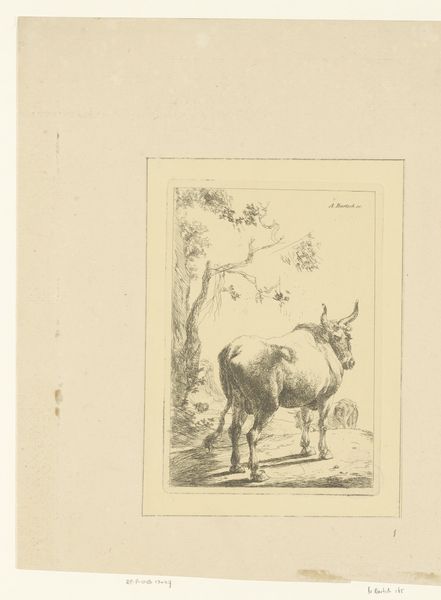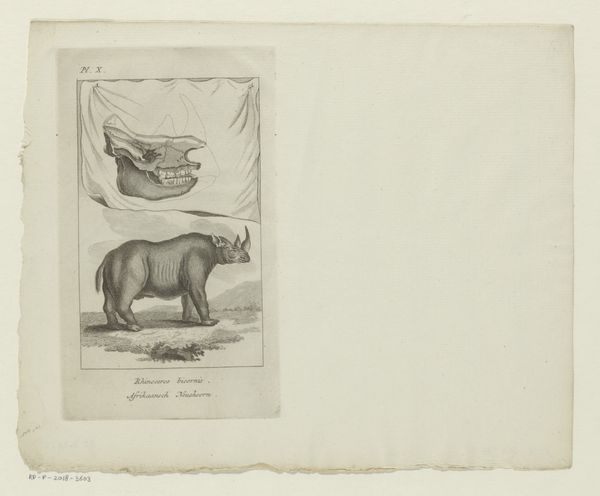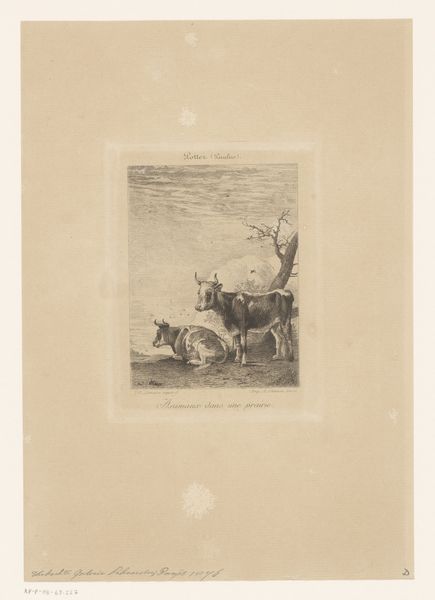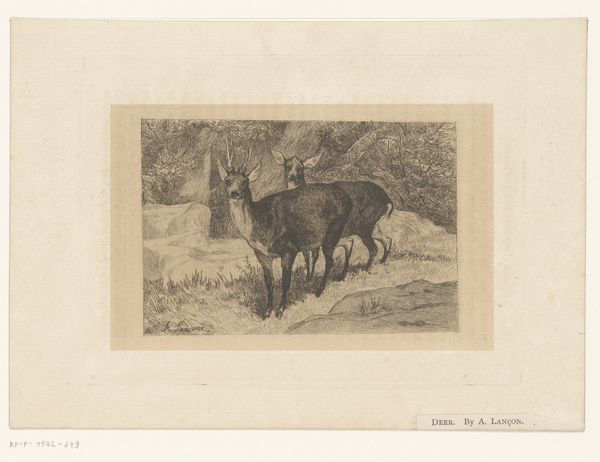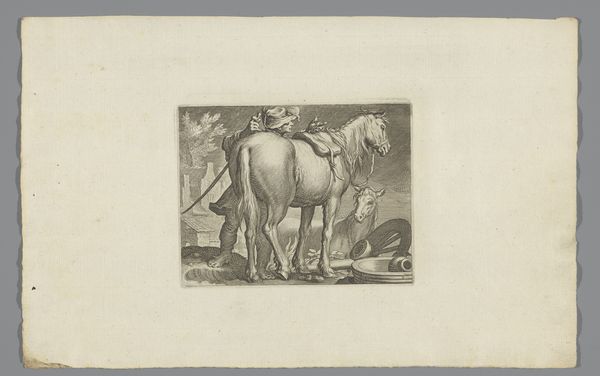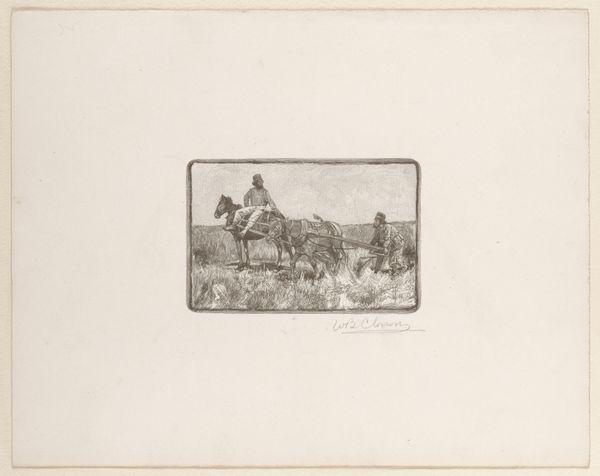
Dimensions: height 314 mm, width 236 mm
Copyright: Rijks Museum: Open Domain
Curator: Look at this etching, "Landschap met ezel," or "Landscape with Donkey," by Jules Héreau, created in 1875 using etching and pencil on paper. It has an interesting narrative aspect because there is a text added to the landscape scene. What are your first impressions? Editor: There’s a quiet solitude here; the textures created through the etching process are quite striking, making the scene look sun-baked and still. The donkey appears pensive, almost melancholic, doesn’t it? The material processes contribute heavily to this feeling of contemplative silence. Curator: Absolutely. Consider the Romanticism evident here, situating nature as a mirror for inner emotions. This work presents questions about how the animal in the artwork relates to the peasantry or working classes, raising conversations of labor exploitation during this historical period. Editor: That is a valid consideration, and yet I am thinking also of Héreau’s skills as an engraver, evidenced in the sharp delineation between shadow and light. You can practically feel the coarseness of the paper and imagining his hand meticulously etching those fine lines into the metal plate allows one to contemplate art and labor. The visual weight on the lower third also anchors it; there seems a connection between the text at the bottom and the detailed plants at either side, making a stage for the donkey itself. Curator: Thinking of Romanticism, the text beneath seems relevant; it humanizes the animal through words. As it focuses on the figure in a landscape, it is not simple observation, and, perhaps, raises more philosophical concerns relating to human existence. The social implications of seeing labor like that can suggest class discourse, and even activism. Editor: True, and considering the social conditions in the 1870s informs much of the artistic sentiment during that era. The material conditions—access to paper, etching tools, even the market for prints like these – shapes the artist’s choices just as much as his artistic sensibilities. I find the image quite grounded precisely because of its unidealized rendering, thanks to his use of stark pencil, which, as you stated earlier, has social implications. Curator: The context we both added gave us better approaches, don't you agree? It enriched this etching for me in particular! Editor: Indeed, both understanding production and delving into social and political concerns surrounding the image helps us understand its place and worth today.
Comments
No comments
Be the first to comment and join the conversation on the ultimate creative platform.



